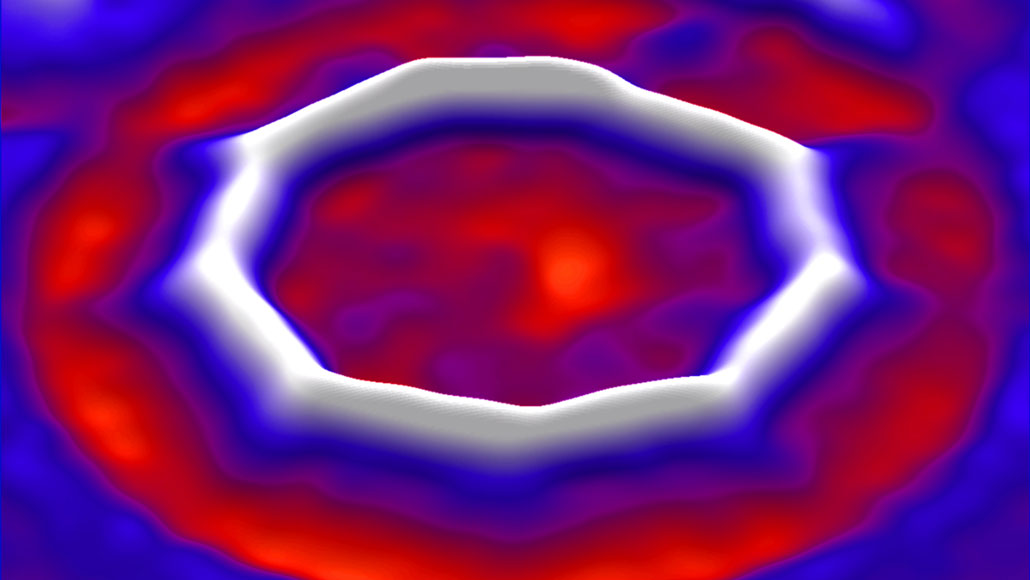
ONE RING Scientists have created a new form of carbon consisting of 18 atoms arranged in a ring, illustrated here with data from an atomic force microscope. Bonds between atoms are alternately longer and shorter, giving the ring nine sides.
IBM Research